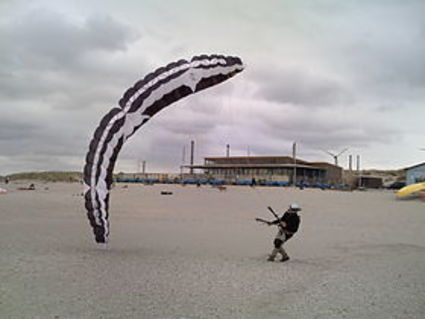Parasailing Operations
‘Know Your Ropes’
September 15, 2013
A series of parasail incidents resulting in fatalities and injuries have occurred over the last few years. Since 2006, there have been 11 deaths and 52 injuries as a result of parasailing activities.
There have been several common factors in all of these incidents that are unique to parasailing. The following mnemonic 'Know Your ROPES' was designed to remind parasail operators of important safety issues that may help prevent future casualties:
• Remember that most parasail fatalities and injuries are related to the failure of the towline. Failures have occurred at tensions significantly below the rated towline strengths due to a variety of reasons that may include cyclic loading, long term exposure to environmental elements, the presence of knots creating a weak point, and overloading.
• Observe and monitor weather conditions continuously. Increases in wind speed impacts the relative speed against the chute, where limits of the towline and/or chute can quickly be exceeded. As wind speed doubles, the load on the towline may quadruple. Be vigilant in monitoring weather conditions, noting the formation of squalls, thunderstorms, or whenever weather fronts are expected to pass through your operational area. Cease operations well before such weather conditions impact your parasailing operation.
• ASTM Standard F2993-13 published on April 1, 2013 is a 'Standard Guide for Monitoring Weather Conditions for Safe Parasail Operation'. It is available for purchase and download on line at http://www.astm.org/.
• Prepare for emergencies by having well-documented procedures and conducting crew training to ensure proficiency in responding to emergencies such as towline breaks, winch failures, propulsion failures, and any other concerns that impact crew/passenger safety.
• Ensure that all of your equipment is properly maintained on a continual basis. This includes the winch and drive motor, hydraulic brakes, hoses and piping, spooling systems, and other tackle. Also check your chutes, harnesses, and related components for stitching failures, degradation, and the need for general repairs. Immediately correct identified problems.
Safety is up to you the Operator. Coast Guard Credentialed Operators are expected to provide an adequate level of safety during vessel operations, to include the monitoring of weather conditions and maintenance of equipment.
The Coast Guard encourages owners and operators to work with each other and related industry associations to share best practices and develop operational standards to maximize safety and prevent marine casualties.
Enforcement action may be taken against the operator for misconduct or negligent operation.
This alert is provided for informational purposes only and does not relieve any domestic or international requirement. Developed by the Office of Investigations and Analysis, USCG Headquarters, Washington, DC.











Reader Comments(0)